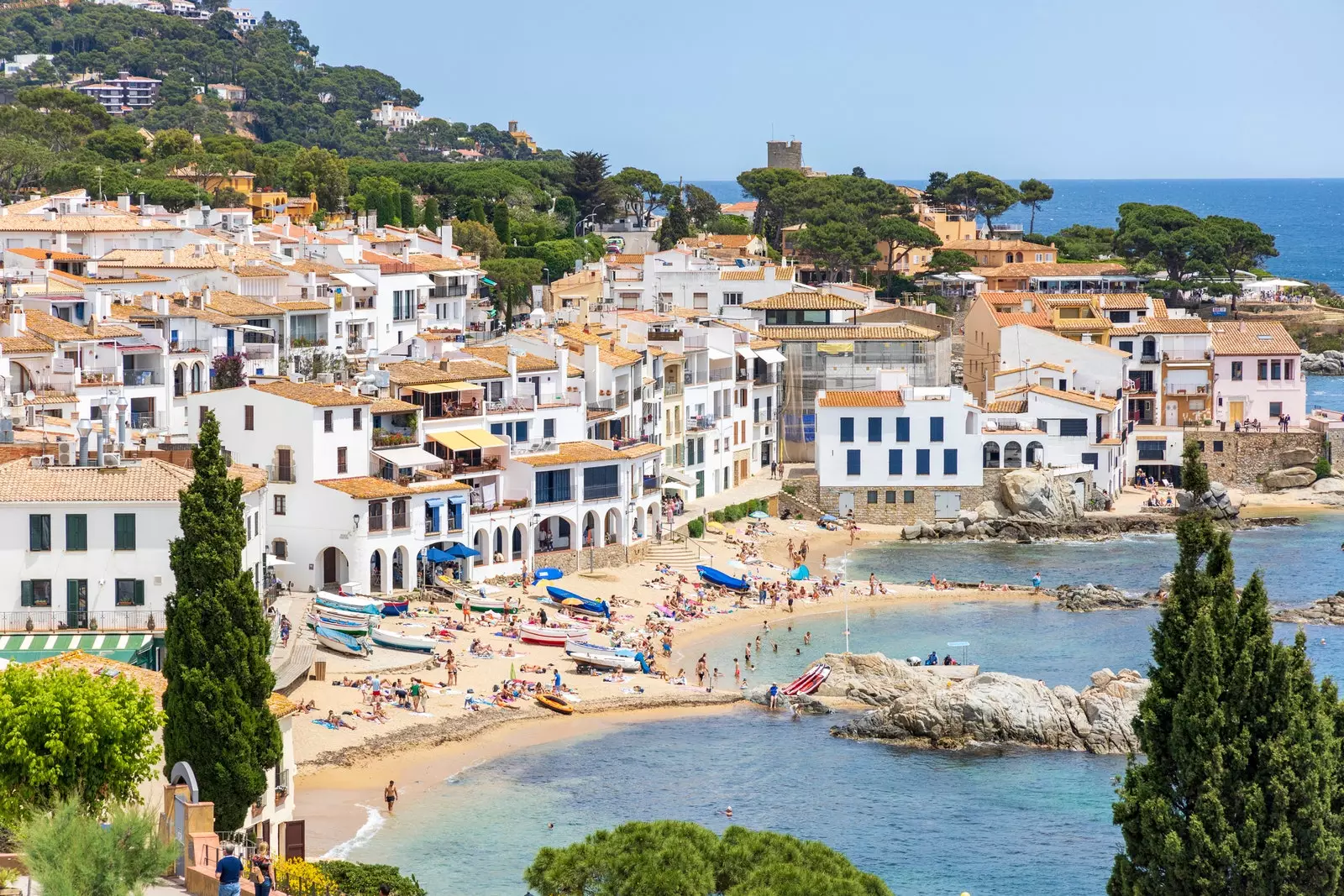
Calella de Palafrugell, on the Costa Brava.
From the city of Palamós to the town of Calella de Palafrugell, both in Girona, there are almost 12 kilometers. At first, one thinks of the handy option of taking a bus or a taxi at a good rate to get there, although it is not usual.
And how do I get there? "Walking, of course!", says the receptionist. And it is that** the Costa Brava can be read through its paths and paths,** especially thanks to the Caminos de Ronda. A system of trails that border its coast and mountains from Blanes to Portbou, inviting the visitor to take this side of the Mediterranean with calm and contemplation.
And the route begins, among the colors of Cala S'Alguer, a lost barracks by Dalí sentenced by a rain of branches and pineapples, or infarct coves such as La Fonda or del Castell, flanked by cañares where someone forgot his surfboard.
You continue walking, waving to the hikers who are always passing you, you slide along Cap Roig and the eternal spring of its botanical garden, until you recognize it in the distance: the town of Calella de Palafrugell where the Mediterranean shines that we came for.
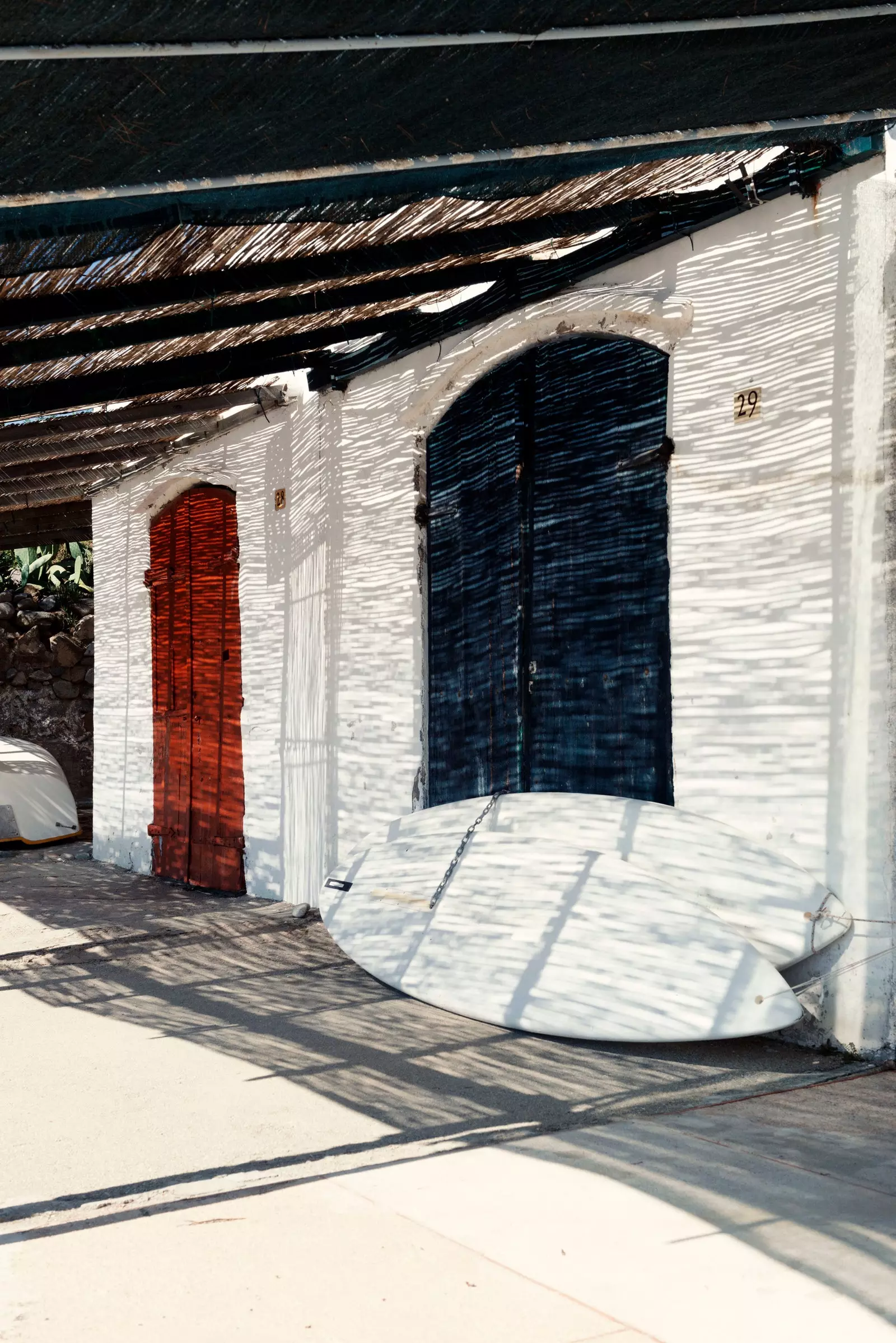
Fishermen's houses in Cala S'Alguer.
I WAS BORN IN THE MEDITERRANEAN
There are places in the world that require a tourist ABC to make sense of it, but Calella de Palafrugell is not one of them. After bypassing the first chalets, the promenade reveals itself as a collection of coves that border the town and among those that are difficult to decide: there we have Els Canyers, surrounded by its stairs to the sea and the fishermen's shacks with their colored doors wide open; or Port Pelegrí, where you sunbathe and suddenly Miquel asks Gina how things went at the hairdresser. It is the first symptom of a town where you don't share the beaches with tourists, but with neighbors; like a sepia-toned postcard in which to feel like a child again.
A photograph from the Sant Roc hotel or the Punta dels Burricaires; another open barrack where mermaids could live and a mediterranean nature so melted How about listening to crickets in the sand?
Calla is a maritime extension of the town of Palafrugell where fishermen once came to protect this portion of the coast from pirates. Over time, fishing and cork fueled the economy of this redoubt until the Catalan bourgeoisie landed in its crystalline waters.
However, the thing here never got out of hand and float shops are scarce, the cement giants and other bad habits of sun and beach tourism.
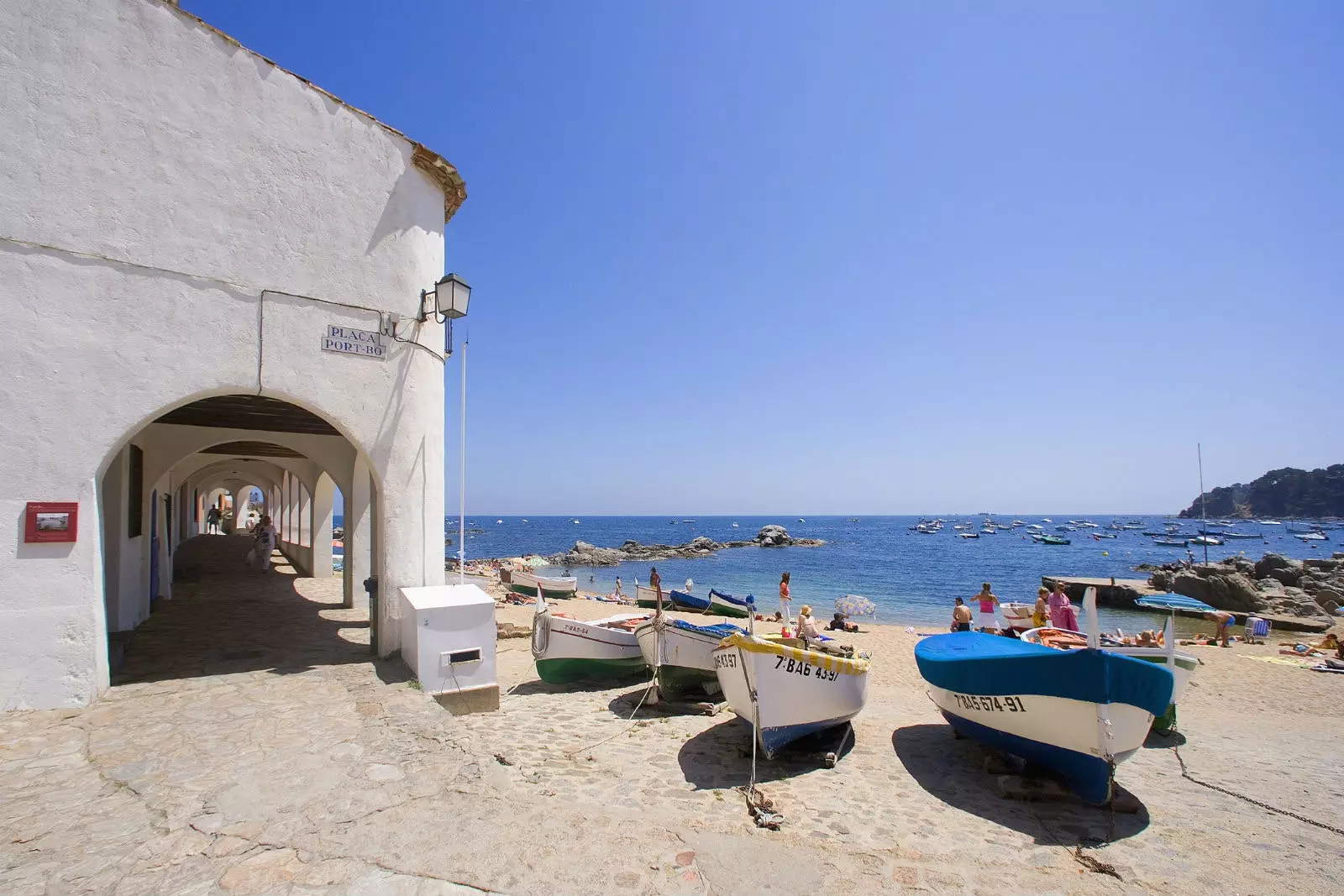
Port Bo in Calella de Palafrugell.
Calella de Palafrugell still maintains the charm of a fishing village and its few hotels have adapted to its magic: the habaneras of Calella, so typical of the fishing community and that are still interpreted on summer nights; the old fishing nets that shine in the Tourist Office but, especially, that Port Bo converted into an icon of the town.
Different colored boats shine on the beach under the white houses defined by their volts, or arches that allow us to look at the Mediterranean in a different way, even Dalinian.
Do not stress to see a hundred thousand attractions, here the philosophy is to let yourself go and get lost among its charms, its shortcuts to the sea or a terrace where you can taste the garoina in season while making sure you don't get caught by its bougainvillea.
Or enjoy a feast of tapas in Calau, seafood in La Blava or Sol y Mar, both blessed from a privileged position to the great blue; the coconut tzatziki at the Hotel Casamar restaurant; either Can Palet shrimp salad with strawberries.
And watch life go by from a table, in front of a sea that that perfumed woman craves which Joan Manuel Serrat described in Mediterráneo, song written in today disappeared Hotel Batlle in Calella de Palafrugell. Because, oh genius!, you were not wrong.
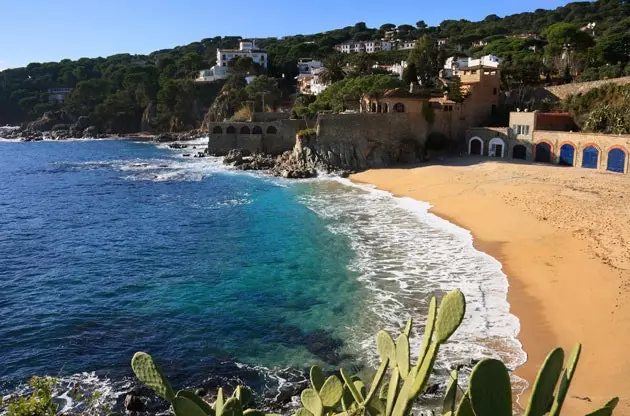
The beach of Calella de Palafrugell.
**TO TAMARIU AND BEYOND**
To speak of Calella de Palafrugell is to speak of Serrat, yes, but especially from Josep Pla. The journalist and writer spent his childhood in this corner of the Costa Brava from which he extracted his favorite portion: the route from Calella de Palafrugell to Tamariu, whose name he relates to "the terays or tarajes that grow on both sides of the stream that flows into the sand on the beach".
To perform this route through the Camino de Ronda, you have to put on your sneakers again and head north until you reach Llafranc, cradle of the San Sebastian Lighthouse where to take the best photos of the views. In addition, you can also visit the Monumental Ensemble of Sant Sebastià de la Guarda, guarded by high cliffs where ancient Iberian peoples once took refuge.
A few more steps and we arrive at Cala Pedrosa, almost as virgin as a Verbatim floppy disk, where her small restaurant keeps Pepita awake cooking outdoors.
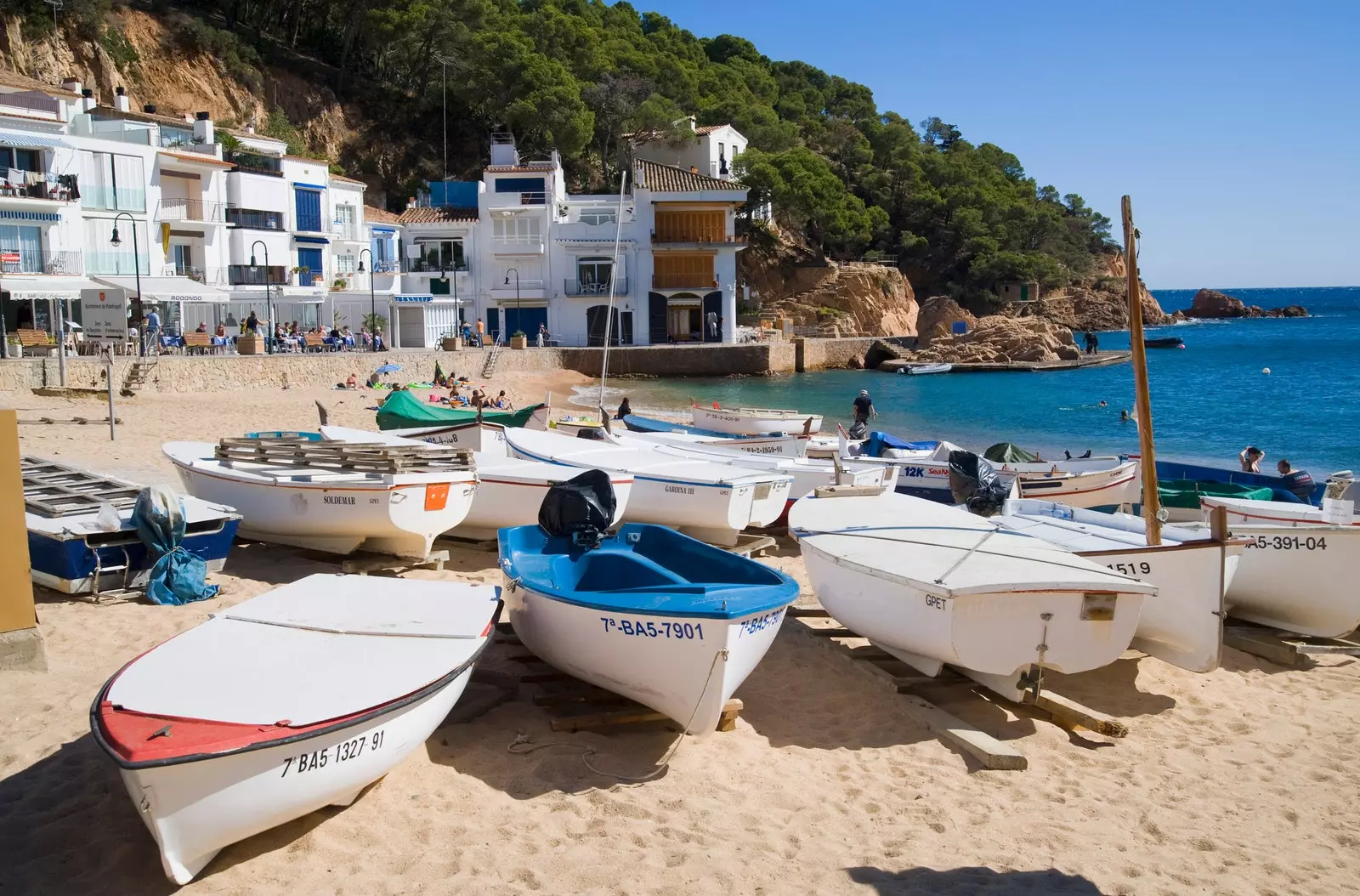
Boats on the beach of Tamariu, Costa Brava.
Wild is the route of the last section of 20 minutes that leads to the little town of Tamariu, with its white houses as the last trace of humanity before getting lost in coves such as Aiguadolça, d’Aigua Xelida or Marquesa, **so narrow and emerald that it seems private. **
After going through this strip of dreams, we come back with a strange sensation through the places and the coves, the flowery balconies and the boats, until reaching the starting point, at the beginning of Calella de Palafrugell. The excursion is not over and you deserve a premium gem such as **the Golfet cove, trapped between the town and Cap Roig. **
A last section of the Camino de Ronda immerses you in tunnels and passageways. Down there, the water is so transparent that naked bodies are evident, pine trees dream of being turquoise and everything invades a strange nostalgia. It must be the sunset or the breeze. Perhaps that healthy envy that we only experience towards another person who is about to live for the first time in a dream place. Could it be that Serrat was right when he sang that "and piled up in your sand, I keep love, games and sorrows".
